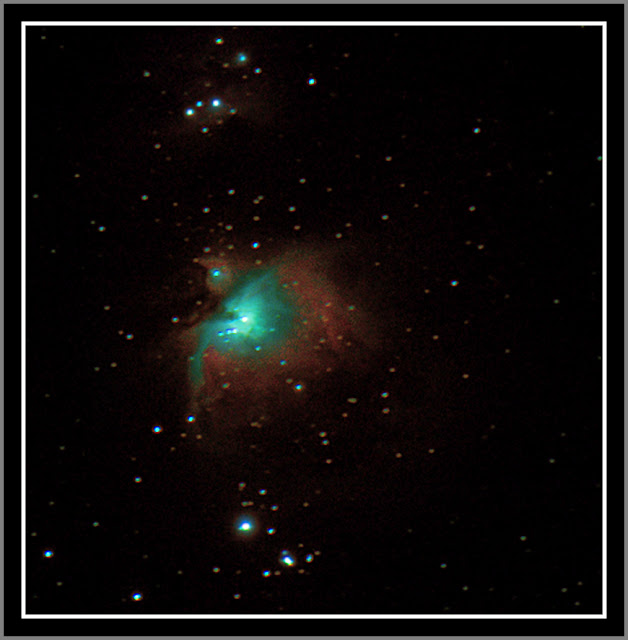
Situated just below Orion's belt, it forms the central part of what is often known as the sword of Orion and its the closest massive place where stars are being born.
Its still a long long way away though as a light travels at 186,000 miles ever second so just multiply
by 31,557,600 seconds in a year by 1,344 years.
I'm pleased with this image as it was unguided and I could sit in my house (in the warm) and watch the images on my laptop coming from the camera outside in the freezing cold. I just popped out and moved the tripod every 20 shots.
Technical details are;
Canon 40D unmodified with 200mm lens @F/4 controlled by APT on a Manfrotto tripod .
The Raw images were stacked using 197 Lights, 30 Darks shot at 2 sec @1600iso and 20 bias @1/8000 sec. Mirror lockup and 5sec delay and 15 seconds between frames to allow the sensor to cool down.
Stacked in DSS and adjusted in PS.
I know these astro images are light years from the quality of most astro photographers but for me I learn so much more about astronomy by taking them.
So often I just looked through my telescope in awe but didn't really understand what I was looking at. Now I enjoy checking out what I have captured during those long cloudy nights.











